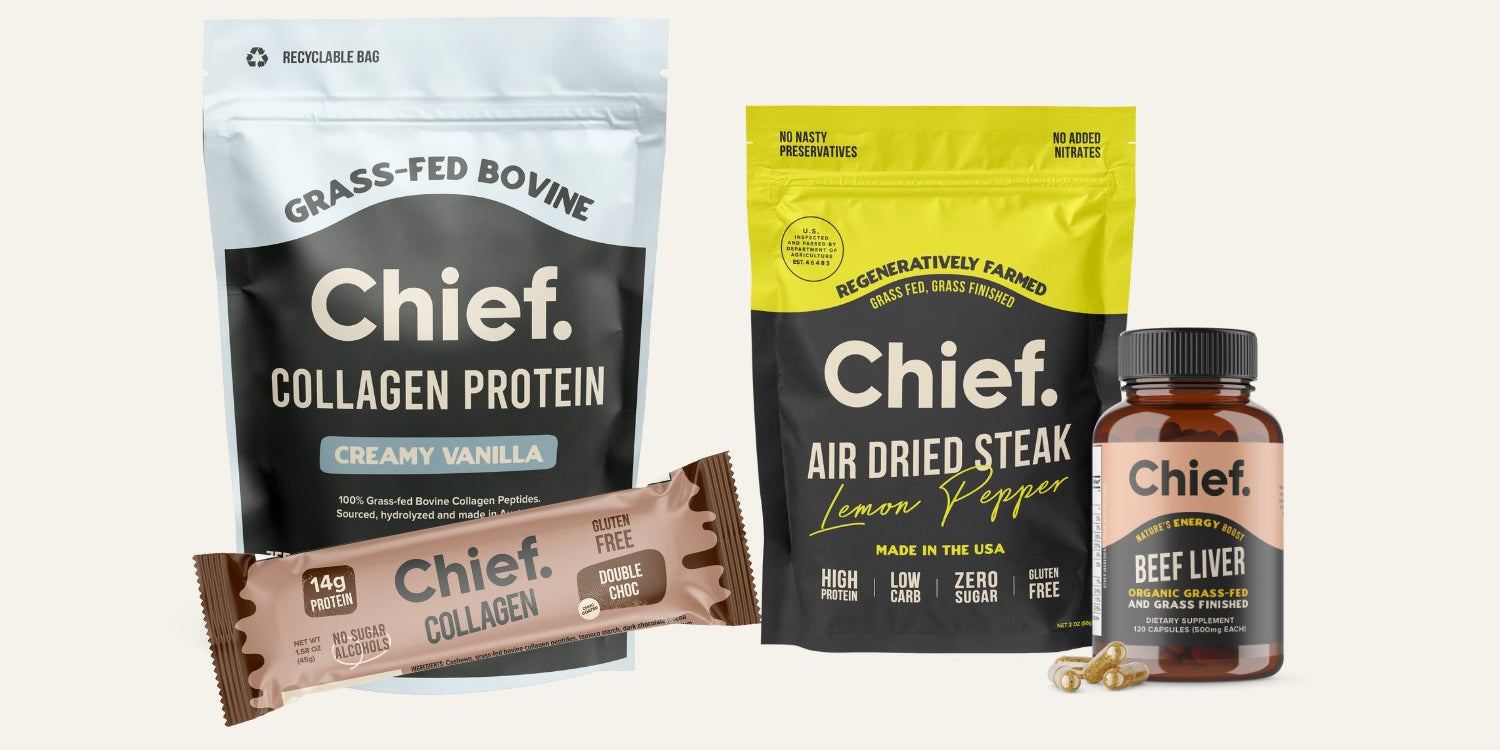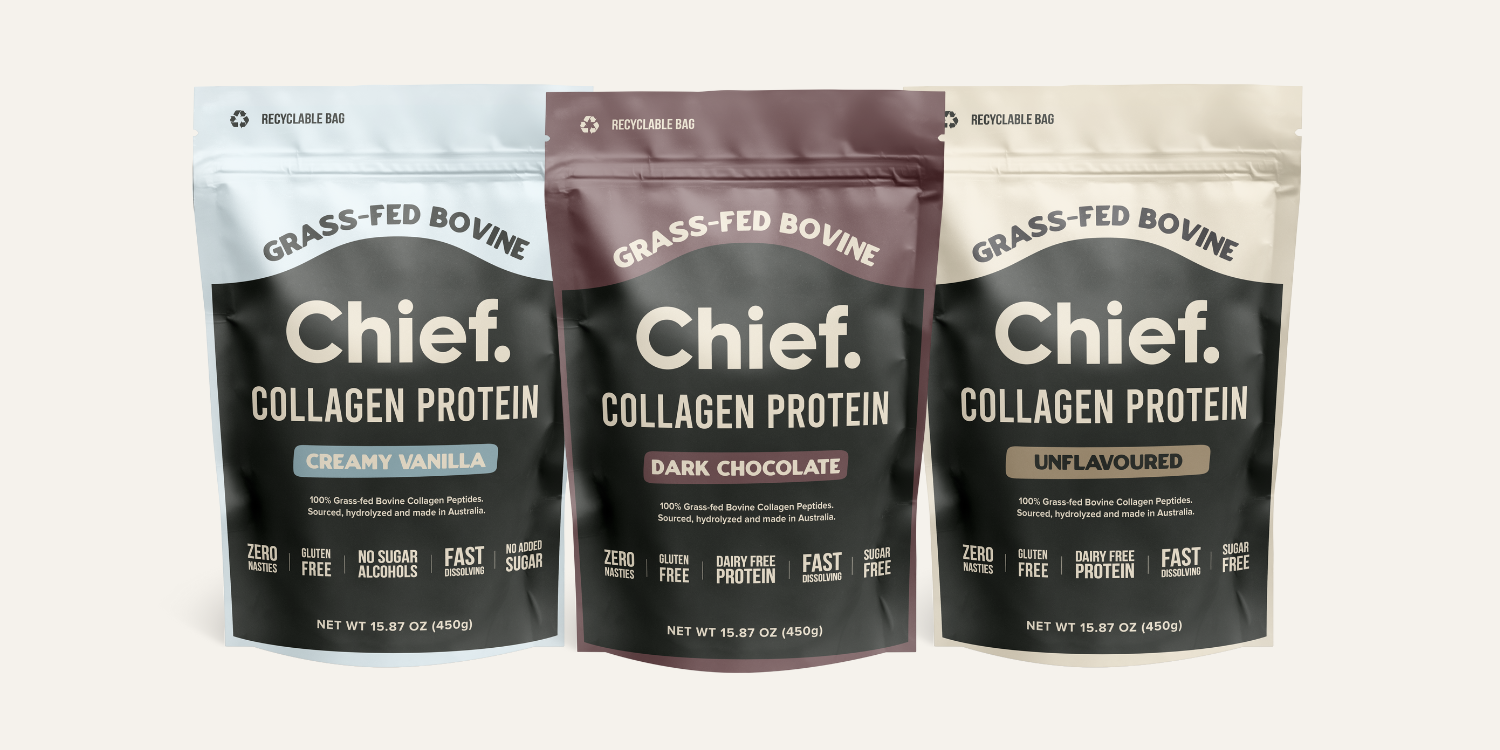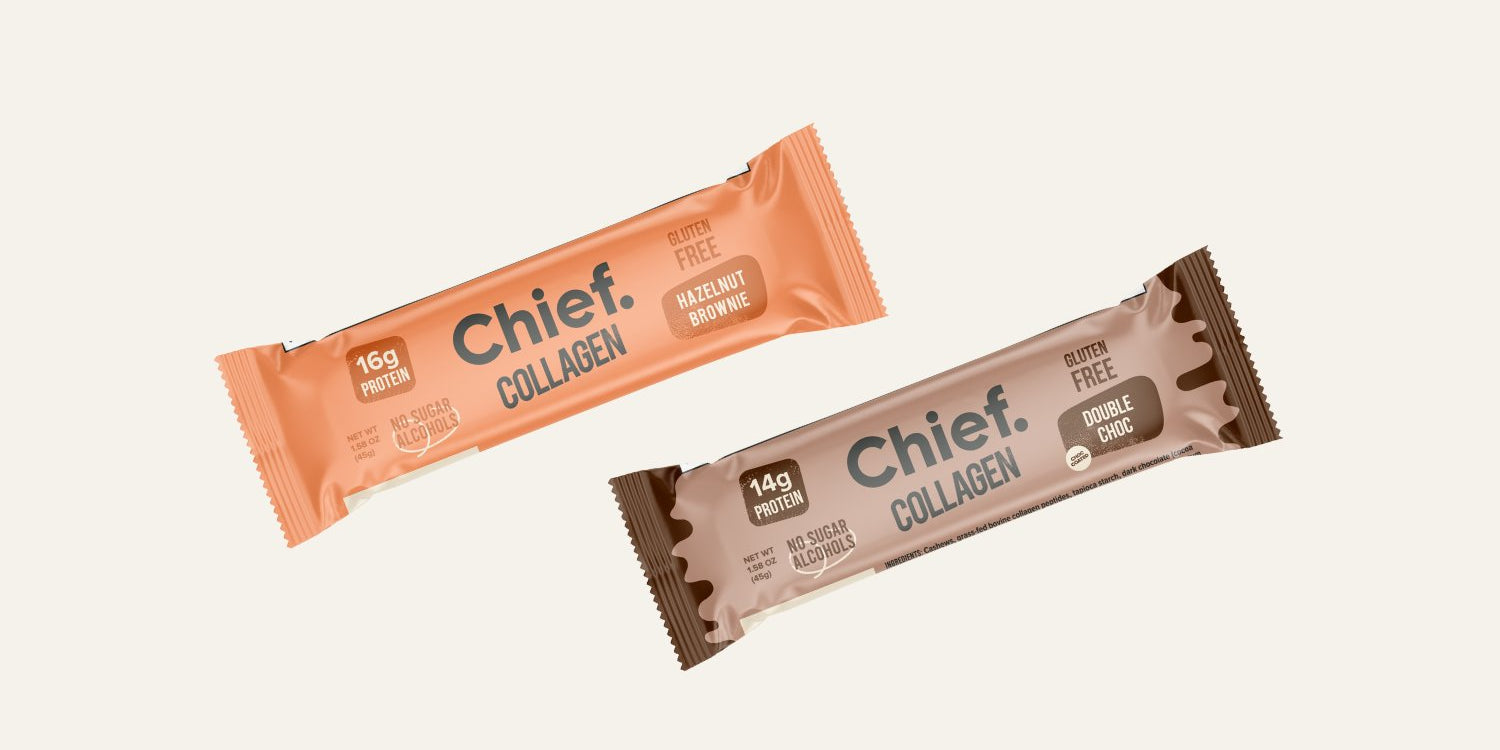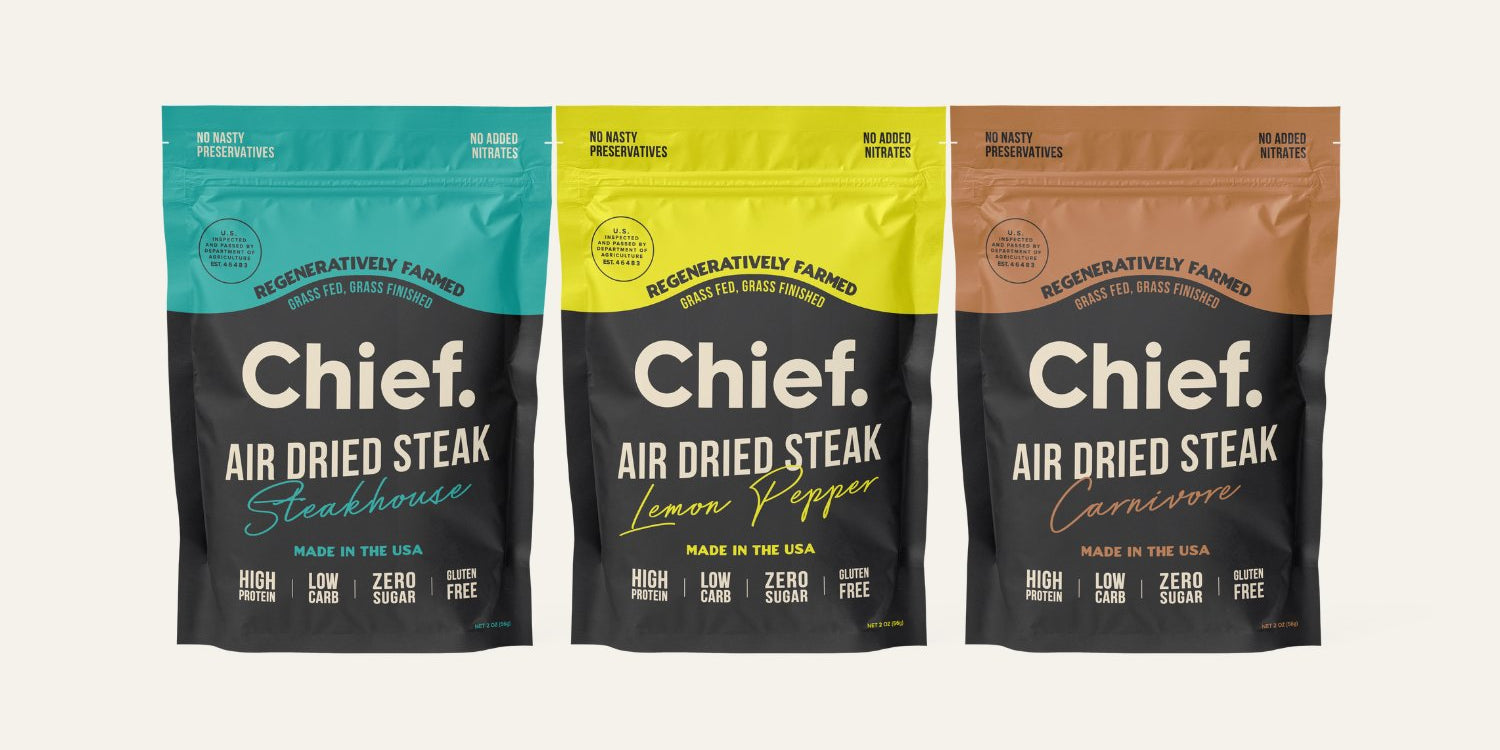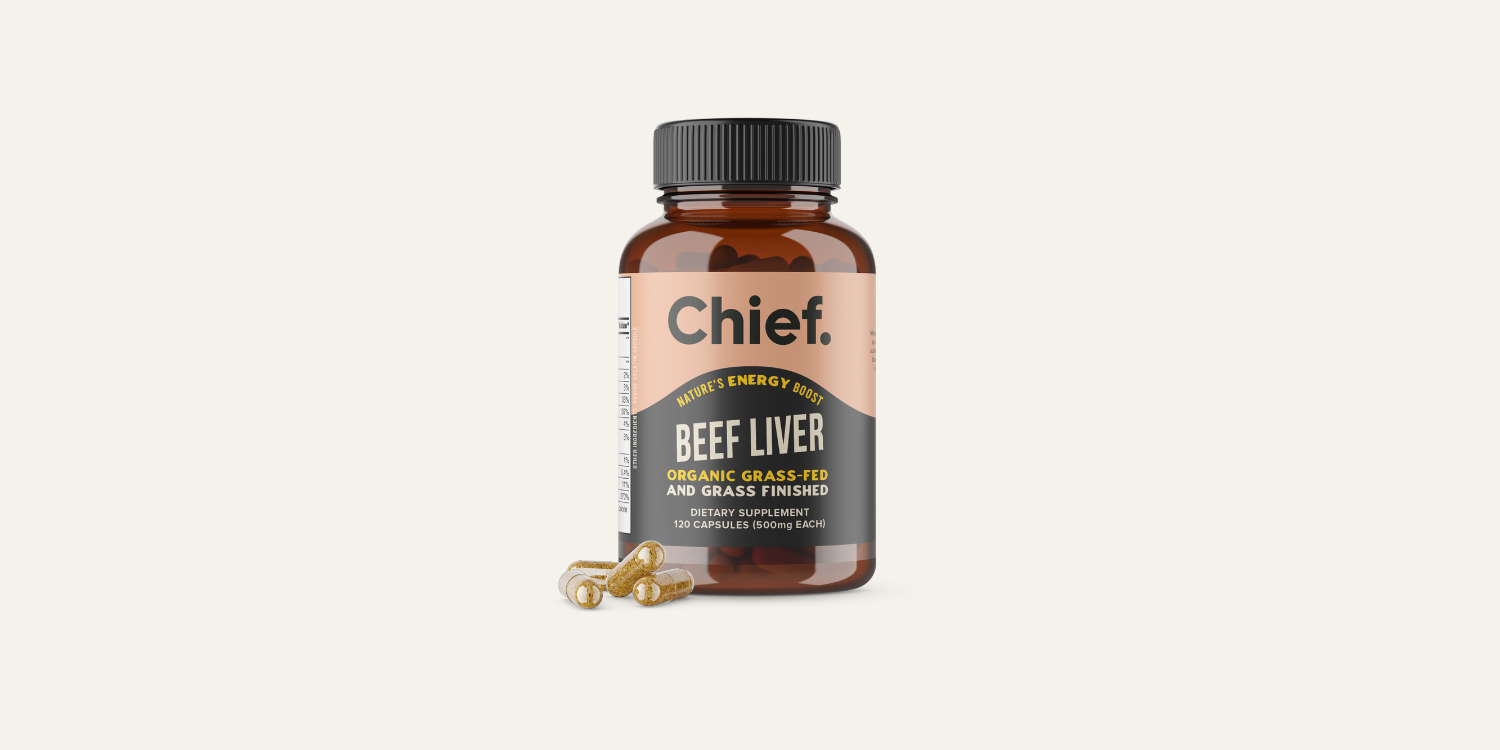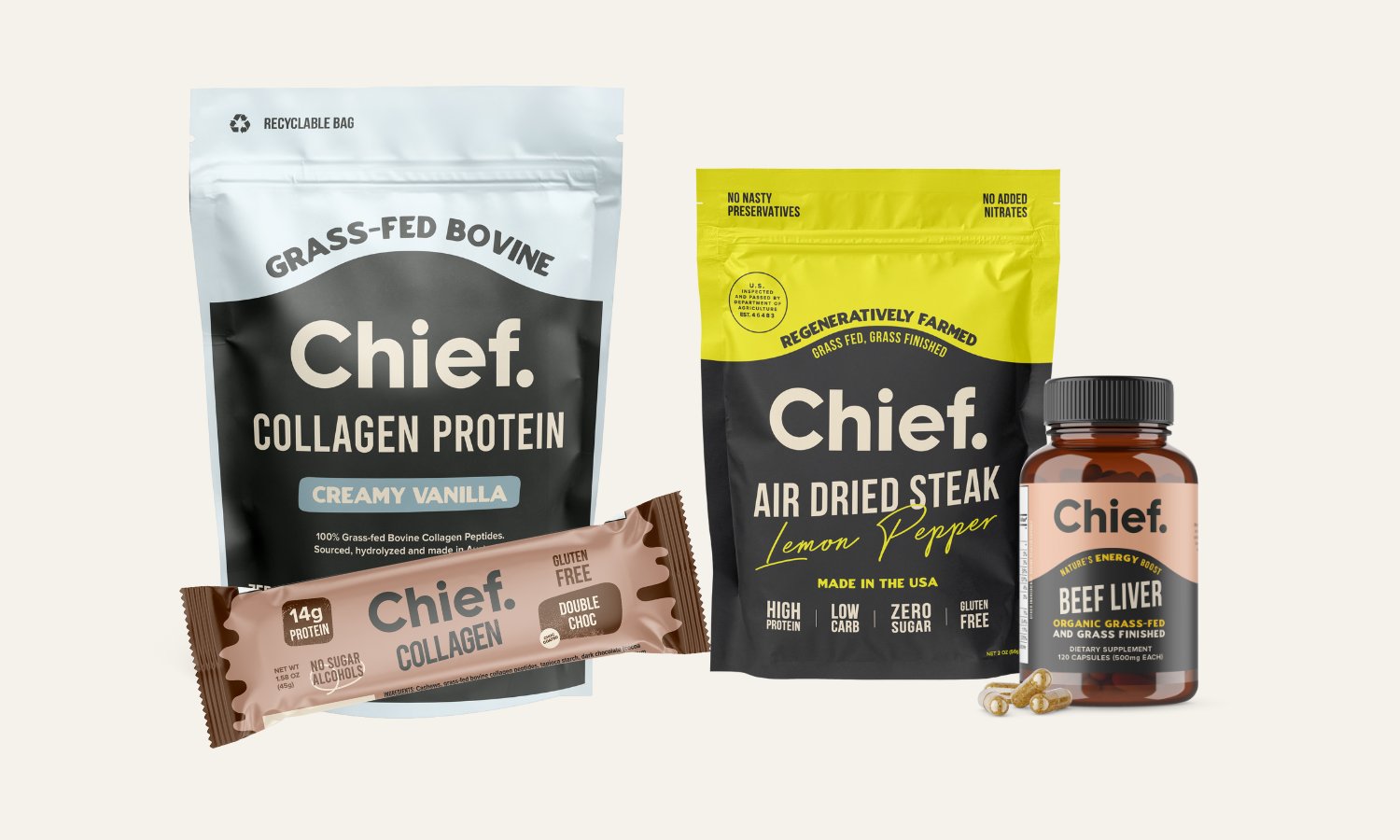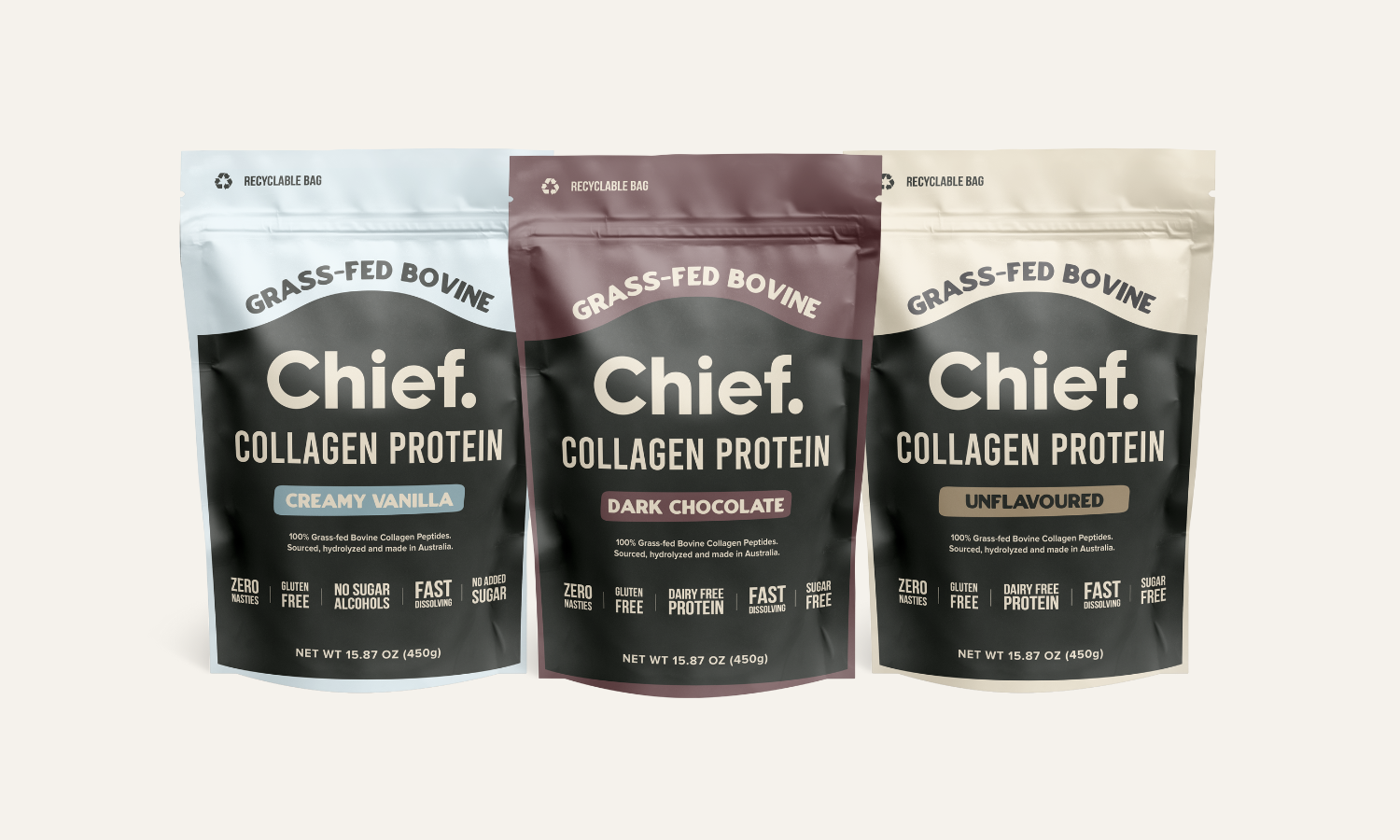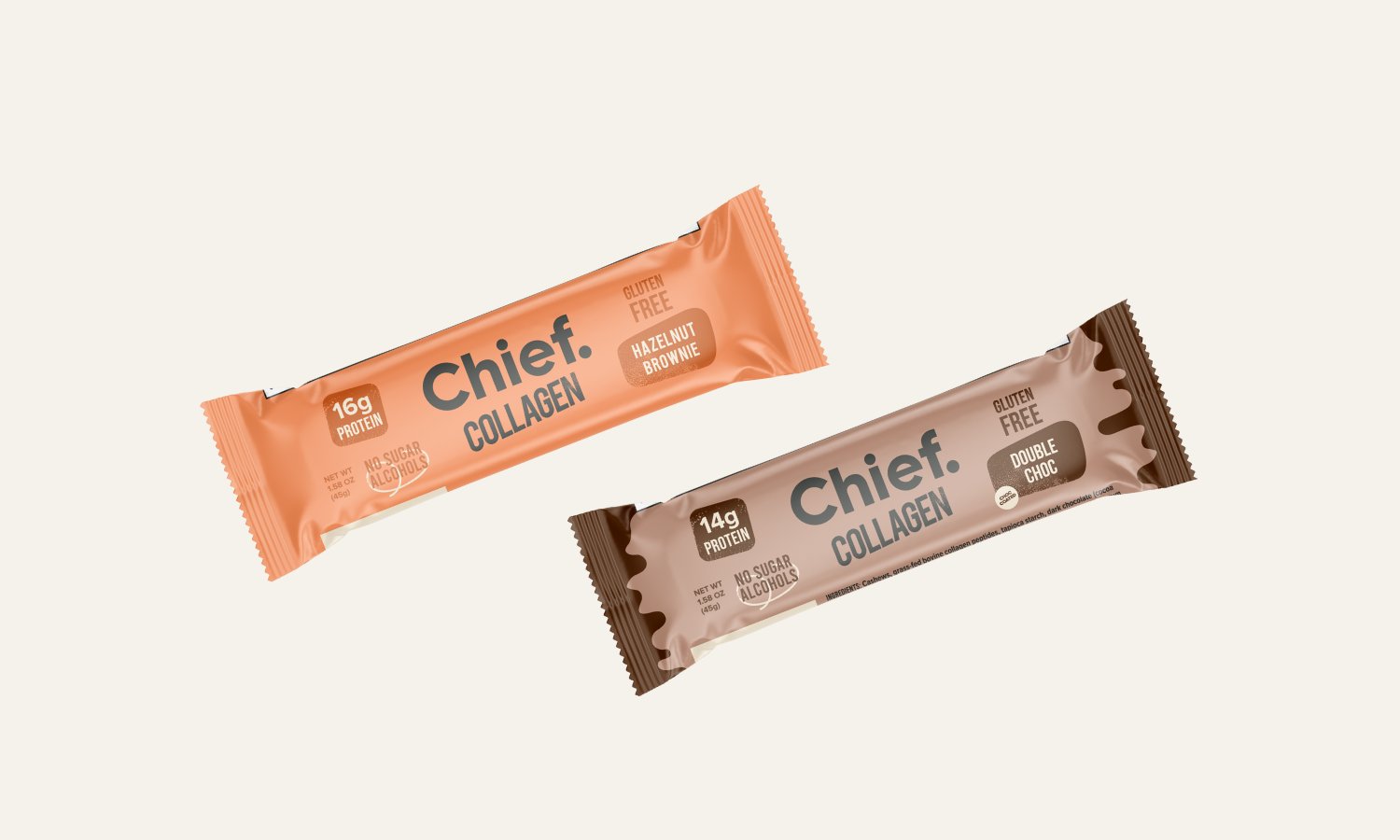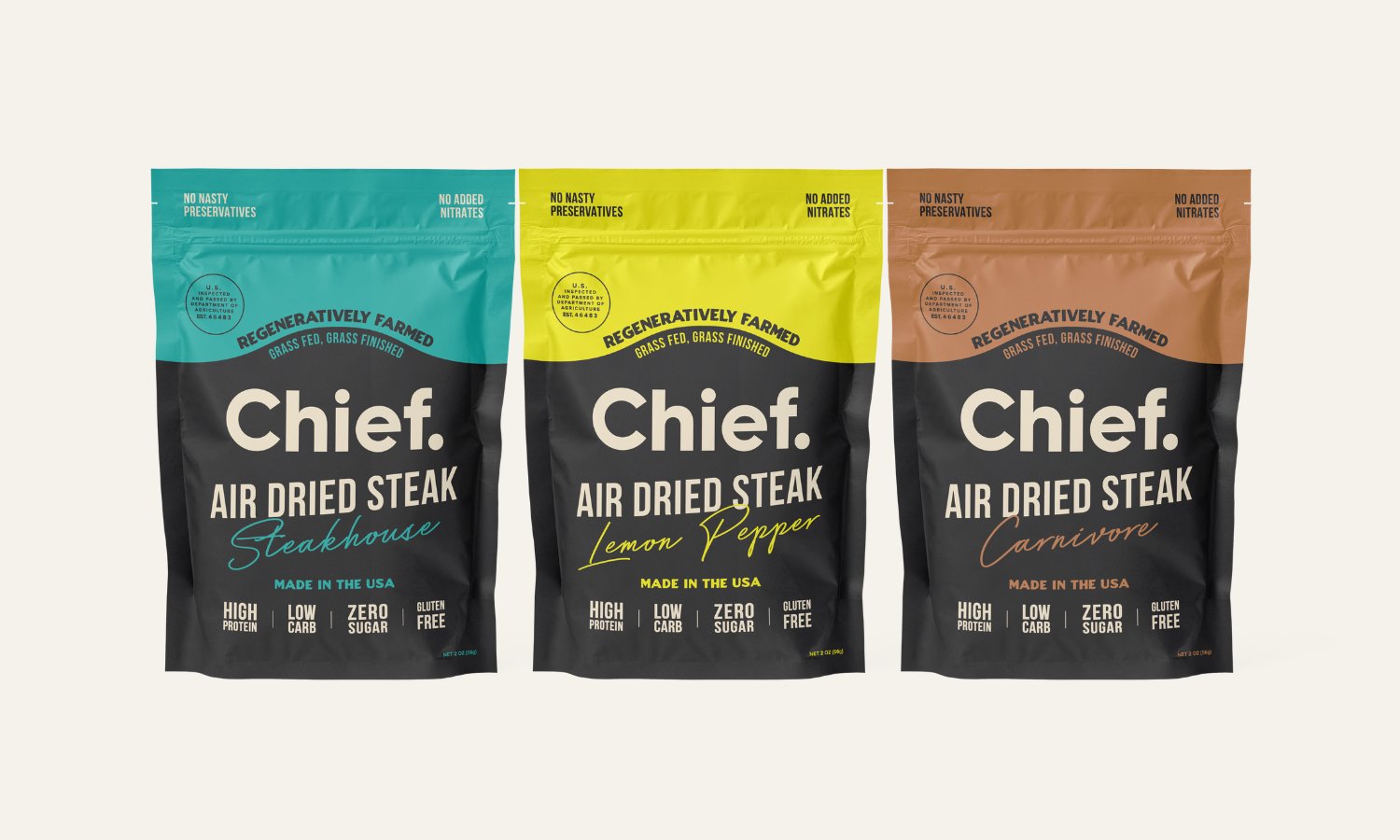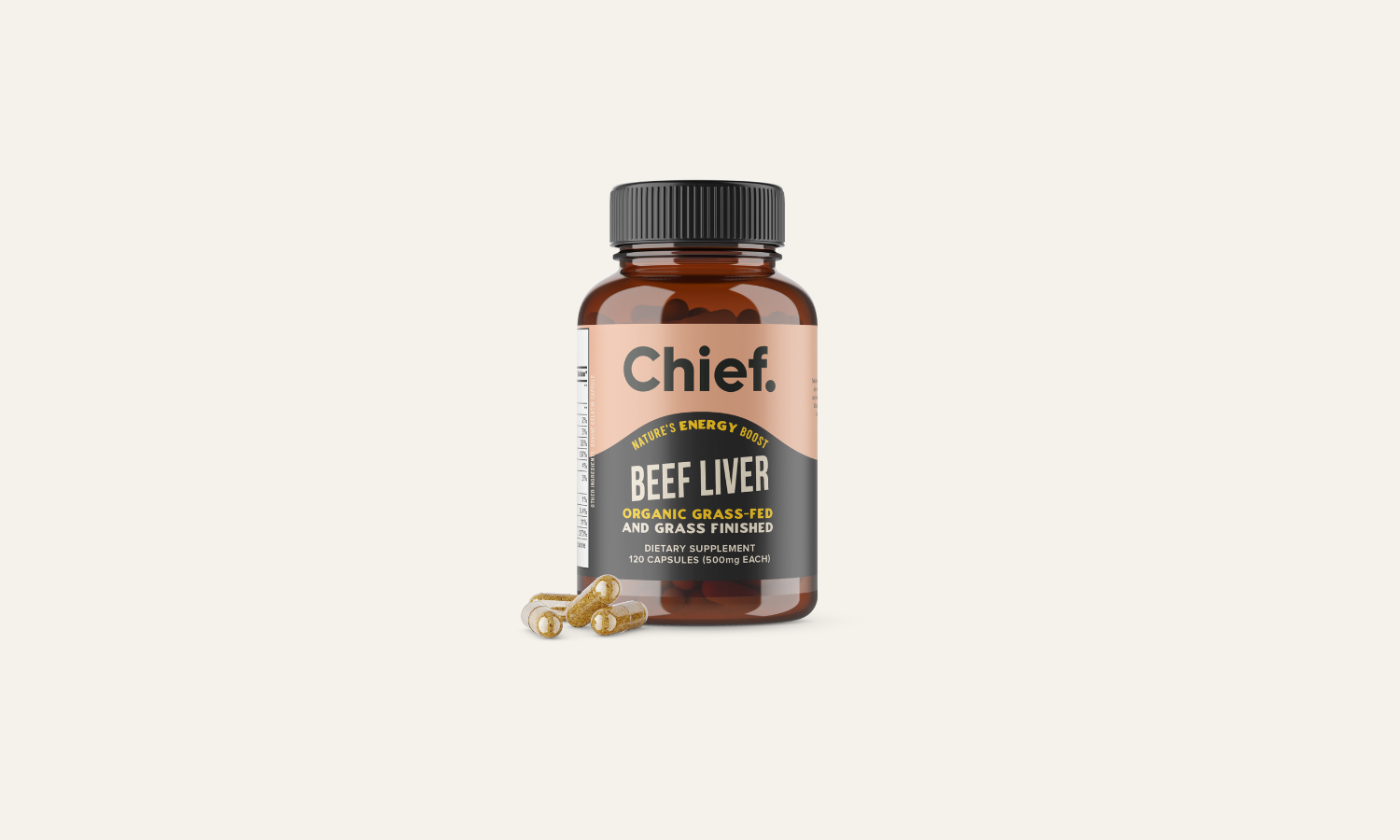Chief is proud to partner with OBE Organic, Australia’s oldest organic beef company, started and owned by farmers.
We chose OBE Organic for our Organic Beef Bars and Organic Biltong because they produce, in our view, the world’s best organic beef. No chemicals, no pollutants, no hormones, nothing... except a whole-hearted commitment to produce the very best grass fed organic beef.
OBE's farms are based in the heartland of Australia, where they freely roam across natural plains, with hardly any fences. All up they have over 8 million hectares of grazing land, that's about the area of Tasmania, or two times the area of Taiwan!
This land is unsuitable for growing crops (only 6% of Australia is suitable for growing crops), but perfect for beef. The cattle live a life free from all unnecessary human interference, feeding on over 250 species of seasonal native grasses and plants.
Does OBE Organic follow Regenerative Agriculture practices?
Yes. OBE don’t claim to be practicing regenerative grazing as their supply chain is already certified organic but both have as their starting point a philosophy of working with nature and caring for the soil as the building block.
The main difference is organic agriculture is certified against robust and well-known standards, whereas regenerative agriculture currently is not and there is no generally accepted "regenerative" certification at this stage.
If you look at the most common definition of regenerative grazing, most of OBE's graziers – especially in the really big properties in the Lake Eyre Basin – have been practically ‘regenerative’ forever. The core tactic of regenerative grazing is to have cattle in large herds and move them around frequently to mimic the herds of the African savannah – in so doing, they eat in a confined space, trample dung and urine into the soil, move on when feed has been eaten, and return to the same spot weeks or months later when the feed (and soil) has regenerated.
This may be logical for the farms most of us see when we’re driving around the countryside where cows can easily overgraze, but for a lot of OBE Organic’s graziers in the Australian outback, their farms are hundreds or thousands of times larger and they have very few fences. So cattle form herds naturally, and roam freely across the land to follow the feed – just like the migratory animals of the savannah do, and which regenerative grazing encourages farmers to mimic.

